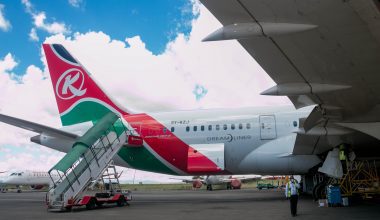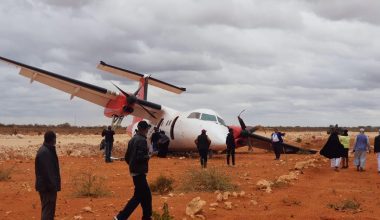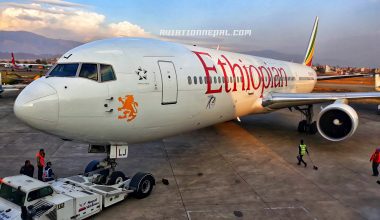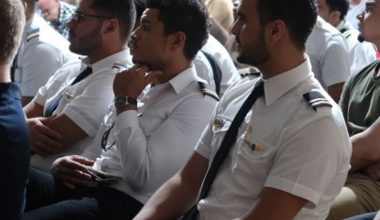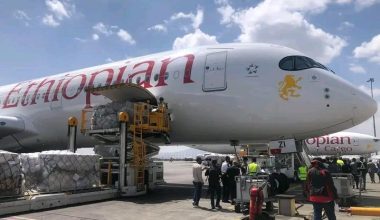On August 15, an Ethiopian Airlines passenger jet, Boeing 737-800 (registered ET-AOB), Flight ET-343 bound for Addis Ababa Bole International Airport, missed the landing as both pilots at the controls fell asleep. Two pilots were operating the flight from Khartoum, the capital of Sudan, to Addis Ababa, Ethiopian’s capital, when they both reportedly fell asleep with the plane on autopilot at 37,000 feet and missed the scheduled landing. The aircraft landed safely on the second approach around 25 minutes after the pilots eventually woke up with an onboard alarm system triggering.

Not-so-awake Ethiopian Airlines pilots mid-air
The Ethiopian Airlines pilots operating flight ET-343 reportedly fell asleep at the yoke when the flight left Khartoum and was cruising at flight level 370. The plane 737 was in autopilot mode and continued flying at 37,000 feet. The aircraft approached the destination airport, but instead of beginning the descent, it passed the point of descent as the not-so-awake pilots were unable to be reached by the Air Traffic Controllers.
After the plane overshot the airport runway and flew past the top of descent, the autopilot disconnected, activating an onboard alarm system which woke the crew up. Then, the pilot began the descent and maneuvered the aircraft for another approach on the runway.
Automatic Dependent Surveillance-Broadcast (ADS-B) data confirmed the aircraft was cruising at 37,000 feet and flying clean over the designated runway where it was supposed to land.
Lost communication with ATC
Despite several attempts of Air Traffic Control to contact the crew and re-establish the connection, it was fruitless. The aircraft temporarily lost communication with Addis Ababa ATC and failed to descend at the airport. The disconnected wailer triggered due to autopilot disconnection brought the sleepy pilots back to consciousness. With the restoration of communication with ATC, pilots safely landed the aircraft 25 minutes after overflying the runway the first time.

Despite falling asleep mid-air and overflying the runway, Ethiopian Airlines pilots woke up, took control, and maneuvered the 737 planes for a safe landing without anyone getting injured or harmed.
Ethiopian Airlines’ statement regarding the incident
The largest airline in Africa, Ethiopian Airlines, released a statement on its website saying that it would take appropriate corrective action based on the outcome of the investigation regarding the incident. It didn’t mention pilots falling asleep, yet it confirmed the removal of the concerned crew from future flights pending further investigation. In the press release, the carrier further stated that it has and will always prioritize safety at first.
The Boeing 737-800 aircraft having a seating capacity of up to 189 passengers, usually takes about two hours to fly from Khartoum to Addis Ababa. The plane flying ET343 on Monday, August 15, departed for the next flight after staying on the Addis Ababa runway for about two and a half hours.
Industry’s response to the incident
The Ethiopian Airlines incident of August 15 buzzed on the internet, and many aviation analysts and enthusiasts took to social media to express their opinions. The experts argue that the incident could be the outcome of overloading the pilot or some external reasons.
Alex Machares, an aviation expert, called the Ethiopian Airlines incident deeply concerning and noted pilot exhaustion as the reason for it. He tweeted that pilot exhaustion was nothing new and remained widespread across the airline spectrum, posing a major threat to air travel safety.
Pilot fatigue is a serious safety issue prevalent among pilots due to unpredictable work hours, long duty periods, and insufficient sleep. In April 2022, the Southern Airlines and Delta Air Lines pilots warned airline executives that fatigue had started to put safety at risk as a result of cancellation chaos caused by inclement weather conditions and rejuvenating demand for air travel. Despite holding pilots responsible as the last line of defense in aviation, the inefficient scheduling process, staffing issues, rising demand for air travel, weather and airspace delays, etc., can affect how pilots perform in a dynamic environment, increasing safety risks.
In May, the ITA Airways captain operating Airbus A330 from New York City to Rome was fired after being found sleeping on the flight that carried as many as 250 passengers on board. Just as in the Ethiopian Airlines incident, the plane lost contact with ATC for about 10 minutes but eventually landed safely in Rome. The carrier fired the captain, stating that his behavior wasn’t consistent with the carrier’s rule.

